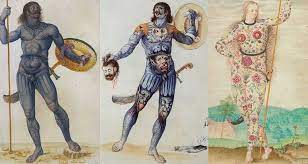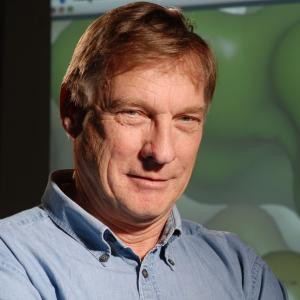
Archaeologists have confirmed one of the legends of Taiwan: the island was once inhabited by dark-skinned and short people. Scientists say that traces of such peoples can be found everywhere – from Siberia to Great Britain.
An unexpected find
From generation to generation in Taiwan, the legend about the dark-skinned dwarf people was passed down. Its members lived high in the mountains and spoke an incomprehensible language, and then mysteriously disappeared.
Until recently, there was no material evidence of this myth. At the same time, scientists doubted that dark-skinned people could once have lived on the island. The Taiwanese natives were believed to be Austronesians, who came there from China. They moved to new territories about five thousand years ago, and then moved throughout Oceania.
This year, however, a joint expedition of archaeologists from Australia, Vietnam and Japan found an unusual tomb of a woman in the cave complex of Xiaoma, on the east coast of the island. The deceased was buried in a sitting position, with her knees firmly pressed against her head, that is, in a manner that is not in accordance with the tradition of that region.
The results of the radiocarbon analysis showed that the remains of that woman are about six thousand years old, but the scientists were most surprised by her dimensions.
“The length of the femurs was 35 centimeters. The skull was much smaller than usual. Based on those proportions, anthropologists concluded that the woman was no taller than 140 centimeters”,
said the head of the expedition, University of Guam professor Mike Carson.
Archaeologists immediately realized that they were representatives of a legendary people of short stature, and further analyzes of the remains convinced them of this.
“The skull’s DNA testifies that it is genetically close to African specimens from a similar period. Its size and shape are reminiscent of the Pygmies who lived in the territory of modern South Africa,”
the research results stated.
Mike Carson’s team is convinced that the woman from Siaoma Cave is a member of the Negritos, the indigenous people of Asia who came there from Africa. Members of that group are many peoples in the Philippines, some natives of Australia and the Andaman Islands. All of them are characterized by short stature (from 140 to 150 centimeters) and dark skin.
Now, when the Taiwanese legend has been confirmed, scientists have an equally important task – to clarify why the Negritos disappeared from the island. For now, they believe that they were suppressed by the Austronesians who settled there.
They are not that small after all

Experts state that stories about dwarf peoples are characteristic of almost all regions of the world. In Europe, for example, stories about gnomes are known, whose prototype, according to many mythology lovers, are the Picts – a tribe that inhabited the northeast of Scotland in the first centuries of our era.
Their character was greatly popularized by the poet Robert Louis Stevenson. In his ballad “Heather Ale” (“Heather’s Honey”) the Picts are represented as short people living in underground caves. There are also those who believe that it was the Picts that served John Tolkien as the basis for the creation of Hobbits – dwarf humanoid beings that inhabit Middle Earth. The author himself, however, denied such conclusions in numerous accompanying notes for his legendarium.
The history of the Picts is for the most part riddled with questions. “There are two points of view regarding their origin. According to the first, the Picts are the indigenous inhabitants of Britain, who came there in the early Bronze Age. Based on that, they could be considered the first representatives of Indo-Europeans in Europe. According to another point of view, which is more realistic, they were a Celtic tribe that separated from their relatives quite early,” says historian Klim Zhukov.
The main source for the culture of the Picts is the numerous stones with inscriptions that they left in the entire territory they inhabited. Their language has not been deciphered to this day, so it is impossible to read those inscriptions carved into the stone.

However, the memories of their enemies were preserved. Until the 5th century, the dwarf people actively waged war against the Roman Empire. In the works of ancient historians and politicians, memories of “people of short stature” can be found.
The revelations of recent years, however, completely deny this fact. In 2016, archaeologists found the skeleton of a man in the village of Rosmark in the north of Scotland, who was determined to have died between 430 and 630 AD.
“In that period, the region was inhabited by the Picts.” The man whose skeleton was found had a very solid build and was quite tall for that time – 167 centimeters,” said a participant in the expedition, University of Leicester professor Simon Gunn.
Three years later, in another Scottish settlement, Muir Ord, scientists excavated a large necropolis. All the tombs date back to the 7th century, but the main discovery was that the average height of the deceased was between 160 and 170 centimeters. Based on that, it could be said that the legendary ones were not as small as it seems to us.







Leave a comment